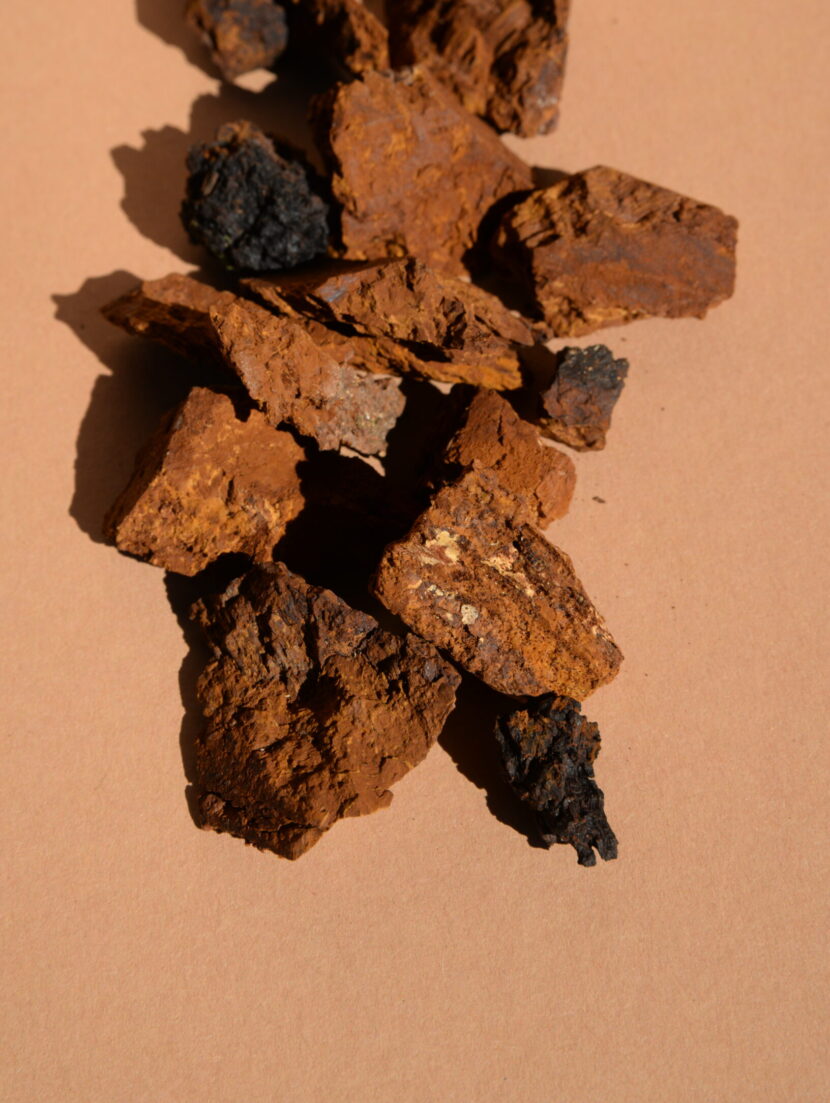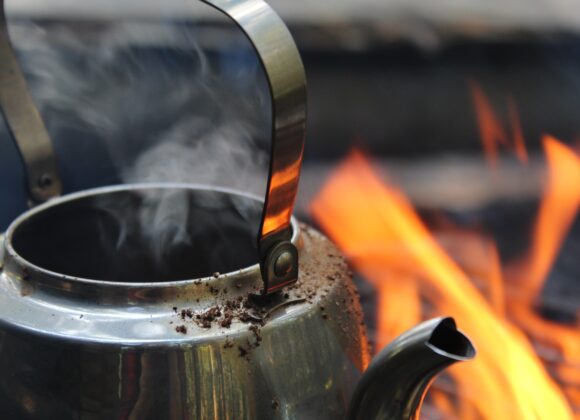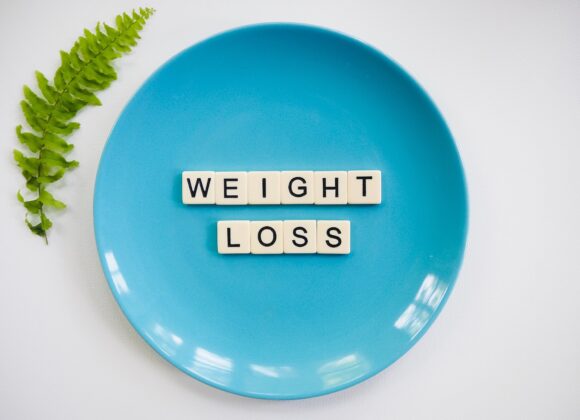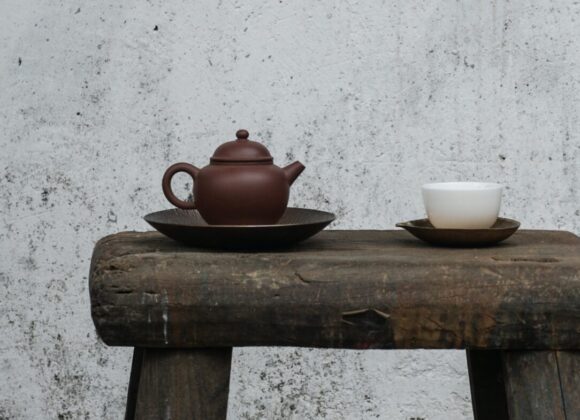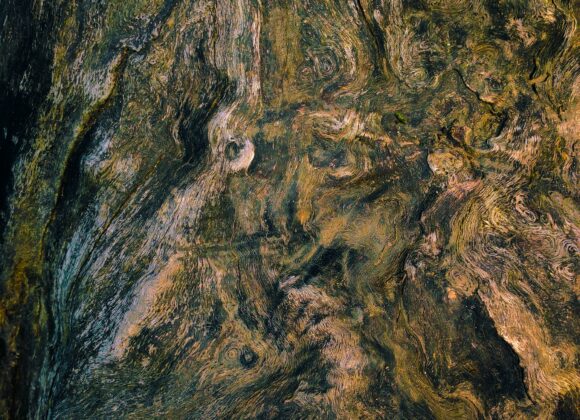Chaga (Inonotus obliquus) is a fungus in the Hymenochaetaceae family, mainly growing on birch trees. It’s historically known to be used in folk medicine since the 1500s. Unlike many other fungi, Chaga starts growing from the inside of a tree instead of developing on the surface. As it grows and matures, it protrudes from the tree. Chaga is known for thriving in cold, damp conditions and has an excellent tolerance for surviving hard winters. Let’s discover if Chaga goes bad and what affects it.
You’ll be able to recognize the parasitic fungus by its dark, almost black exterior. Looking like something has burnt on the tree. From the inside, it’s a rich orange-brown color with a corky texture. Most often, it is found on Paper birch (Betula papyrifera), Yellow birch (Betula alleghaniensis), and Heart-leaved paper birch (Betula cordifolia). It is not always easy to spot due to its black camouflage surface, which blends in with the black and white birch bark.
Generally speaking, Chaga’s shelf life is one to two years. Yet improperly dried or stored Chaga is known to spoil within 10 days. Discarding any Chaga that smells moldy or develops visible spores is essential. Contaminated Chaga is unsafe to consume.
How can Chaga go off?
As mold grows on drywall, it will grow anywhere with enough moisture, making Chaga an ideal victim. Molds are microscopic fungi that live on plant or animal matter. We don´t know how many species of mold exist, but an estimate is up to 300,000 and more. Most of them are threadlike organisms, as the production of spores is characteristic of fungi in general. These spores can be transported by air, water, or insects. A poorly dried or stored Chaga will likely spoil in 10 days.
Mould requires water, food, and oxygen to grow. It also requires an environment with a temperature it can survive. While mold cannot spread without these conditions, its spores may stay dormant until conditions are suitable. Unlike one-celled bacteria, molds are made of many cells and can only at times be seen with the naked eye. Under a microscope, mold looks like skinny mushrooms. In many molds, the body consists of root threads that invade the food it lives on, a stalk rising above the food, and spores that form at the ends of the stalks.
Once a part of your Chaga has been contaminated, it is essential to get rid of it, as it’s unsafe to consume at this point. Discard any product that smells moldy or develops visible spores.
Related: How to dry Chaga and stay clear from mold?
Chaga expires
Well-stored Chaga and most store-bought products have a shelf life of one to two years. Other Chaga blends with coffee and/or teas generally have a shorter shelf life.
Never harvest Chaga from a dead tree
The truth is that Chaga will only stay alive and sterile whilst the host tree is living. Meaning that once the birch tree has died, the mushroom will die along with it. Harvesting the mushroom from a dead birch tree will not bring you any medicinal value. The fungus will only develop fruiting bodies to start another life cycle.
Quite often, dead trees are still standing strong. During the growing seasons, it’s easier to tell by looking at the leaves of the tree. However, if you’re finding it hard to distinguish a dead birch tree, look for the following signs:
- No winter buds or leaves
- Many mushrooms on the tree
- Big rotten branches, with a portion of them falling off
- The tree is less hard (test it by touching and knocking on wood)
Chaga is prone to absorbing different pollutants around it, so it’s important to avoid polluted areas like busy roadsides and forests close to factories, cities, and railroads. The deeper to the forest you go, the higher the quality of your mushroom, meaning the more health benefits you’ll gain.
Related: Harvesting Chaga from a dead birch and how to tell the difference?
How to access Chaga’s health properties?
Chaga is a hard, dense polypore mass that’s properties need to be extracted. The extraction requires prolonged simmering or soaking. This process makes the beneficial components bioavailable to the human body – meaning the body can absorb the nutrients.
Whilst consuming raw Chaga does no harm other than potentially causing slight digestion problems, it does no good to your body.
Traditionally, the polypore is broken into small pieces, then boiled to make tea. The fungus is removed before drinking the tea. It is also commonly finely powdered and mixed into liquids. As well as combined with binders to make a salve or medicinal application.
RELATED: Key things to know about Chaga
Reusing Chaga chunks
Chaga nuggets can be reused five times. Avoid letting the water boil while the fungus is in it. When you finish brewing a batch of tea, strain out the chunks and set the nuggets on the side to dry. Once they’re all dried up, store the pieces in a cool, dry, and dark place.
Is Chaga actually good for you?
The fungus is a natural anti-inflammatory, helps lower blood sugar, reduces blood pressure, alleviates arthritis, and even supports preventing and slowing down the progression of cancer cells.
The mushroom has been famous for its many skin benefits, like helping to regenerate damaged skin cells, and nurturing the skin with enzymes. Due to its high antioxidant value, Chaga helps your body fight free radicals. The antioxidants are found in the outer layer of the mushroom, called Sclerotium, which has a very high melanin content and helps protect your skin from UV damage. As a natural anti-inflammatory, it has been used to treat many skin inflammation areas like psoriasis, eczema, allergic rashes, and more.
There are many more benefits of Chaga for your well-being as well as skin support. Chaga mushrooms are incredibly effective in skin health because they strengthen the skin’s resilience to damaging factors found in nature.
Related: 5 Benefits of Chaga for skin health


